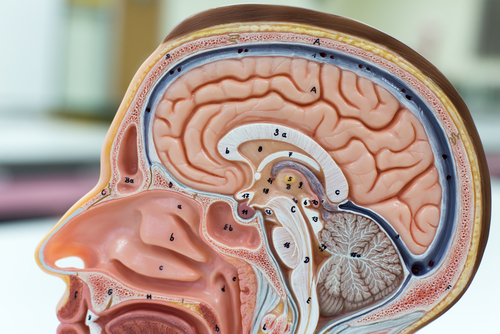Most Subclinical Cushing’s Patients Don’t Require Glucocorticoids After Adrenalectomy, Study Finds
Written by |

Patients with subclinical hypercortisolism, i.e., without symptoms of cortisol overproduction, and adrenal incidentalomas recover their hypothalamic-pituitary-adrenal (HPA) axis function after surgery faster than those with Cushing’s syndrome (CS), according to a study.
Moreover, the researchers found that an HPA function analysis conducted immediately after the surgical removal of adrenal incidentalomas — adrenal tumors discovered by chance in imaging tests — could identify patients in need of glucocorticoid replacement before discharge.
Using this approach, they found that most subclinical patients did not require treatment with hydrocortisone, a glucocorticoid taken to compensate for low levels of cortisol in the body, after surgery.
The study, “Alterations in hypothalamic-pituitary-adrenal function immediately after resection of adrenal adenomas in patients with Cushing’s syndrome and others with incidentalomas and subclinical hypercortisolism,” was published in Endocrine.
The HPA axis is the body’s central stress response system. The hypothalamus releases corticotropin-releasing hormone (CRH) that acts on the pituitary gland to release adrenocorticotropic hormone (ACTH), leading the adrenal gland to produce cortisol.
As the body’s defense mechanism to avoid excessive cortisol secretion, high cortisol levels alert the hypothalamus to stop producing CRH and the pituitary gland to stop making ACTH.
Therefore, in diseases associated with chronically elevated cortisol levels, such as Cushing’s syndrome and adrenal incidentalomas, there’s suppression of the HPA axis.
After an adrenalectomy, which is the surgical removal of one or both adrenal glands, patients often have low cortisol levels (hypocortisolism) and require glucocorticoid replacement therapy.
“Most studies addressing the peri-operative management of patients with adrenal hypercortisolism have reported that irrespective of how mild the hypercortisolism was, such patients were given glucocorticoids before, during and after adrenalectomy,” the researchers wrote.
Evidence also shows that, after surgery, glucocorticoid therapy is administered for months before attempting to test for recovery of HPA function.
For the past 30 years, researchers at the University Hospitals Cleveland Medical Center have withheld glucocorticoid therapy in the postoperative management of patients with ACTH-secreting pituitary adenomas until there’s proof of hypocortisolism.
“The approach offered us the opportunity to examine peri-operative hormonal alterations and demonstrate their importance in predicting need for replacement therapy, as well as future recurrences,” they said.
In this prospective observational study, the investigators extended their approach to patients with subclinical hypercortisolism.
“The primary goal of the study was to examine rapid alteration in HPA function in patients with presumably suppressed axis and appreciate the modulating impact of surgical stress in that setting,” they wrote. Collected data was used to decide whether to start glucocorticoid therapy.
The analysis included 14 patients with Cushing’s syndrome and 19 individuals with subclinical hypercortisolism and an adrenal incidentaloma. All participants had undergone surgical removal of a cortisol-secreting adrenal tumor.
“None of the patients received exogenous glucocorticoids during the year preceding their evaluation nor were they taking medications or had other illnesses that could influence HPA function or serum cortisol measurements,” the researchers noted.
Glucocorticoid therapy was not administered before or during surgery.
To evaluate HPA function, the clinical team took blood samples before and at one, two, four, six, and eight hours after the adrenalectomy to determine levels of plasma ACTH, serum cortisol, and dehydroepiandrosterone sulfate (DHEA-S) — a hormone produced by the adrenal glands.
Pre-surgery assessment of both groups showed that patients with an incidentaloma plus subclinical hypercortisolism had larger adrenal masses, higher ACTH, and DHEA-S levels, but less serum cortisol after adrenal function suppression testing with dexamethasone.
Dexamethasone is a man-made version of cortisol that, in a normal setting, makes the body produce less cortisol. But in patients with a suppressed HPA axis, cortisol levels remain high.
After the adrenalectomy, the ACTH concentrations in both groups of patients increased. This was found to be negatively correlated with pre-operative dexamethasone-suppressed cortisol levels.
Investigators reported that “serum DHEA-S levels in patients with Cushing’s syndrome declined further after adrenalectomy and were undetectable by the 8th postoperative hour,” while incidentaloma patients’ DHEA-S concentrations remained unchanged for the eight-hour postoperative period.
Eight hours after surgery, all Cushing’s syndrome patients had serum cortisol levels of less than 2 ug/dL, indicating suppressed HPA function. As a result, all of these patients required glucocorticoid therapy for several months to make up for HPA axis suppression.
“The decline in serum cortisol levels was slower and less steep [in the incidentaloma group] when compared to that observed in patients with Cushing’s syndrome. At the 6th–8th postoperative hours only 5/19 patients [26%] with subclinical hypercortisolism had serum cortisol levels at ≤3ug/dL and these 5 were started on hydrocortisone therapy,” the researchers wrote.
Replacement therapy in the subclinical hypercortisolism group was continued for up to four weeks.
Results suggest that patients with an incidentaloma plus subclinical hypercortisolism did not have an entirely suppressed HPA axis, as they were able to recover its function much faster than the CS group after surgical stress.





